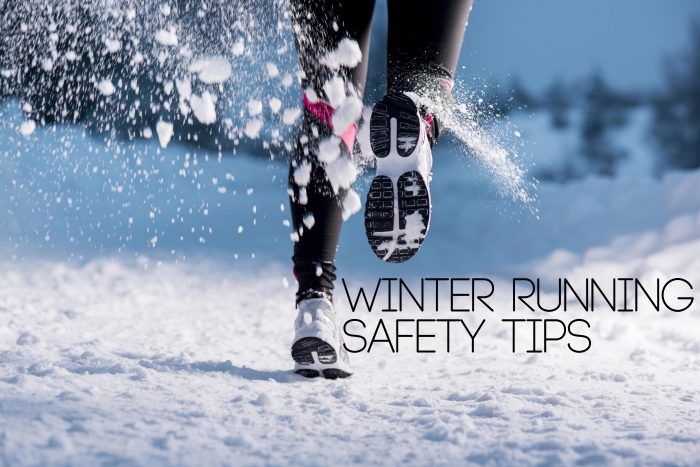Winter Running Safety Tips

It takes determination to run during the winter. When it’s frigid outside, most of us would rather stay bundled up in the heated indoors. For those of you with a New Year’s Resolution to get in shape, you may need to bare the cold and take a jog outside. Once you get adjusted to the temperature, keeping active in the cold weather can help protect you from seasonal depression and keep you in shape.
Exercising in cold weather can benefit your health in more ways than one.
- A little Vitamin D exposure can help defeat winter blues.
- Your body will produce endorphins as it fights to stay warm.
- When it’s cold, it becomes more strenuous work for your heart to distribute blood throughout your body, which can strengthen your heart muscle. (However, if you have heart problems, this can negatively impact your heart health.)
- More calories will be burned during an outdoor workout. This is because your body is working harder to maintain its core temperature.
You must prepare yourself to face the elements before you can reap the benefits. The following tips will help you prepare for your winter jog.
- Dress in layers. The first layer should be a synthetic material, such as polyester. Avoid wearing cotton. Polyester is light, breathable, and non-absorbent. If the temperature is cold enough, add an insulating layer, like fleece. You’ll only need an insulating layer if that temperature is below 10 degrees. Then, wear a wind/waterproof layer, such as nylon. As a rule of thumb, dress as if it’s much warmer than it is–once you start running, your body will warm up pretty quickly.
- Avoid running outside if the weather is below 0, or if the windchill hits negative temperatures.
- Wear a pair of wool socks and running gloves to keep your hands and feet warm. Our hands and feet lose heat quickly because the body is designed to keep our vital organs warm first. In cold temperatures, there is a reduction of blood flow through our feet and hands.
- In cold temperatures, our muscles tighten up more. This increases the risk of pulling a muscle while running outside in cold weather. Be aware of this, and try to take it easy on yourself during outdoor winter workouts.
- If you get wet, head home and change your clothes immediately. Wet clothes, cold weather, and wind do not mix well. These conditions lead to an increase in risk of hypothermia.
- Stay hydrated.
- Try to go on your runs when it’s daylight. Avoid running during sunrise or sunset, when the temperature is cold and it’s dark outside.
Do you have questions about your insurance? Find an insurance agent near you with our Agent Finder
Search All Blogs
Search All Blogs
Read More Blogs
Stay or Go? Why Improving Your Current Home Might Be Your Best Move Yet
Love your home, don’t leave it! Discover why improving beats moving.
The Unforgettable Eight: Women Who Captured Our Hearts
Meet the eight women who are loved by all.
Elevate Your Enterprise: 11 Smart Ways to Boost Business Professionalism
Boost your business’s professionalism without breaking the bank.
Lightening the Load: A Guide to Decluttering for Your Loved Ones
Declutter for peace of mind, yours and theirs.
Smart Car Buying: Beyond the Sticker Price
Unlock the hidden costs of car ownership.
6 Simple Steps to Supercharge Your Home Security
Simple, affordable ways to protect your home.
Beyond Boredom: Unearthing the Surprising Stories Behind Our Favorite Board Games
Game night secrets revealed! Discover the surprising origins and quirky facts behind your beloved board games.
Avoiding the Pitfalls: Common Mistakes of At-Home Businesses
Launch your home business right! Learn to avoid the common errors that can derail your entrepreneurial dreams.
Your Life Insurance Recipe: Crafting the Perfect Blend for Your Family’s Future
Find your perfect life insurance mix: Learn how to blend term and permanent policies for optimal family protection.
From Ford’s Innovation to Today’s Marvel: Unveiling the Secrets of Modern Car Production
Beyond the assembly line: Discover the surprising speed, customization, and quality checks involved in modern car manufacturing.










